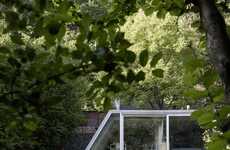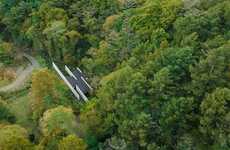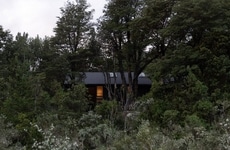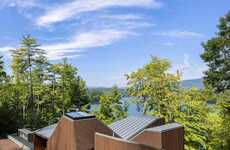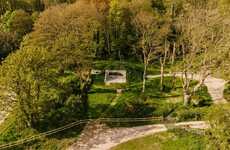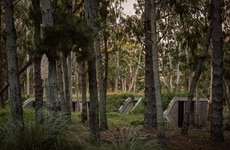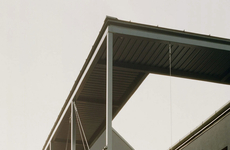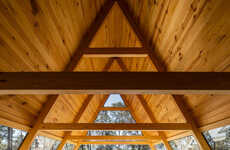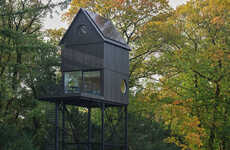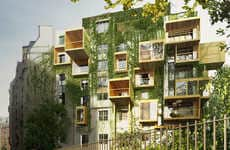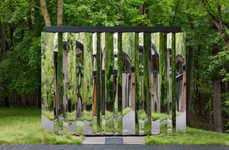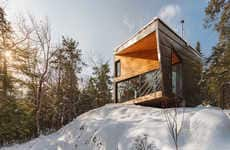
This Home in South Korea Highlights the Surrounding Environment
Joey Haar — January 17, 2018 — Art & Design
References: archdaily
It can be difficult to embrace nature when building a home in an idyllic environment, since the stated purpose of a building is to keep people sheltered from the outdoors, but this forest bunker from JHW IROJE Architects manages to do the trick. Though constructed in a vaguely Brutalist style that seems at odds with nature when viewed in a vacuum, the home's layout actually makes it an ideal edifice for engaging with the natural.
The forest bunker, which has been designed for a soon-to-retire professor and engineer to live in after wrapping up his career, is indeed made mostly out of glass and concrete — materials far more foreign to the environment than wood, for instance. However, the concrete made it far less expensive to build the home in several segments, with different rooms disconnected and scattered around the property. As such, living in the house will necessitate going outdoors constantly as one moves between these separated rooms.
The forest bunker, which has been designed for a soon-to-retire professor and engineer to live in after wrapping up his career, is indeed made mostly out of glass and concrete — materials far more foreign to the environment than wood, for instance. However, the concrete made it far less expensive to build the home in several segments, with different rooms disconnected and scattered around the property. As such, living in the house will necessitate going outdoors constantly as one moves between these separated rooms.
Trend Themes
1. Disconnect Living Spaces - The use of concrete to build the house in different segments demonstrates an opportunity for a trend towards disconnected living spaces, allowing for more interactions with the environment.
2. Engaging Nature-centered Architecture - The forest bunker showcases an opportunity for a trend towards architecture that allows people to engage with nature while still providing shelter.
3. Affordable Sustainable Architecture - Using concrete instead of wood highlights an opportunity for a trend towards sustainable architecture that incorporates affordable materials.
Industry Implications
1. Architecture and Construction - The use of concrete and glass as a building material opens up the architecture and construction industry to innovation in more affordable, sustainable building solutions.
2. Real Estate and Property Development - The opportunity to build more nature-centered architecture creates a demand for innovative and eco-friendly designs in the real estate and property development industry.
3. Sustainability and Green Technology - The use of more eco-friendly building materials in architecture presents an opportunity for the growth of the sustainability and green technology industry, as it becomes more integral to the construction process.
3.5
Score
Popularity
Activity
Freshness

